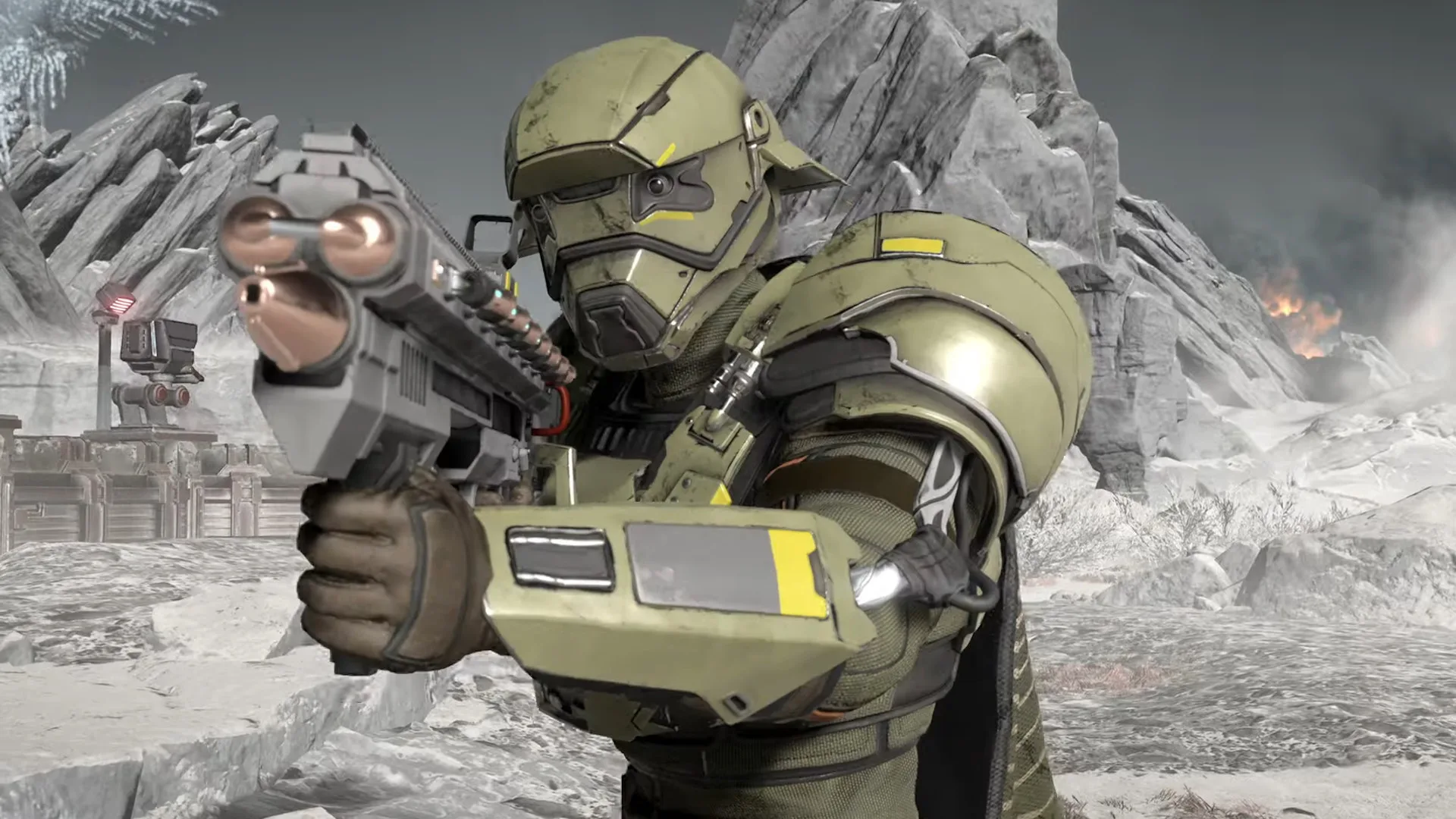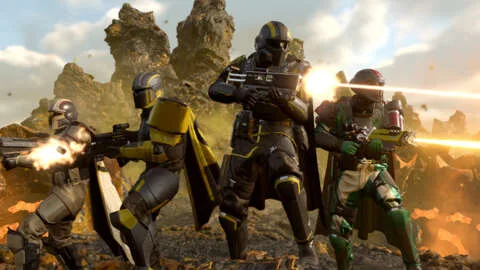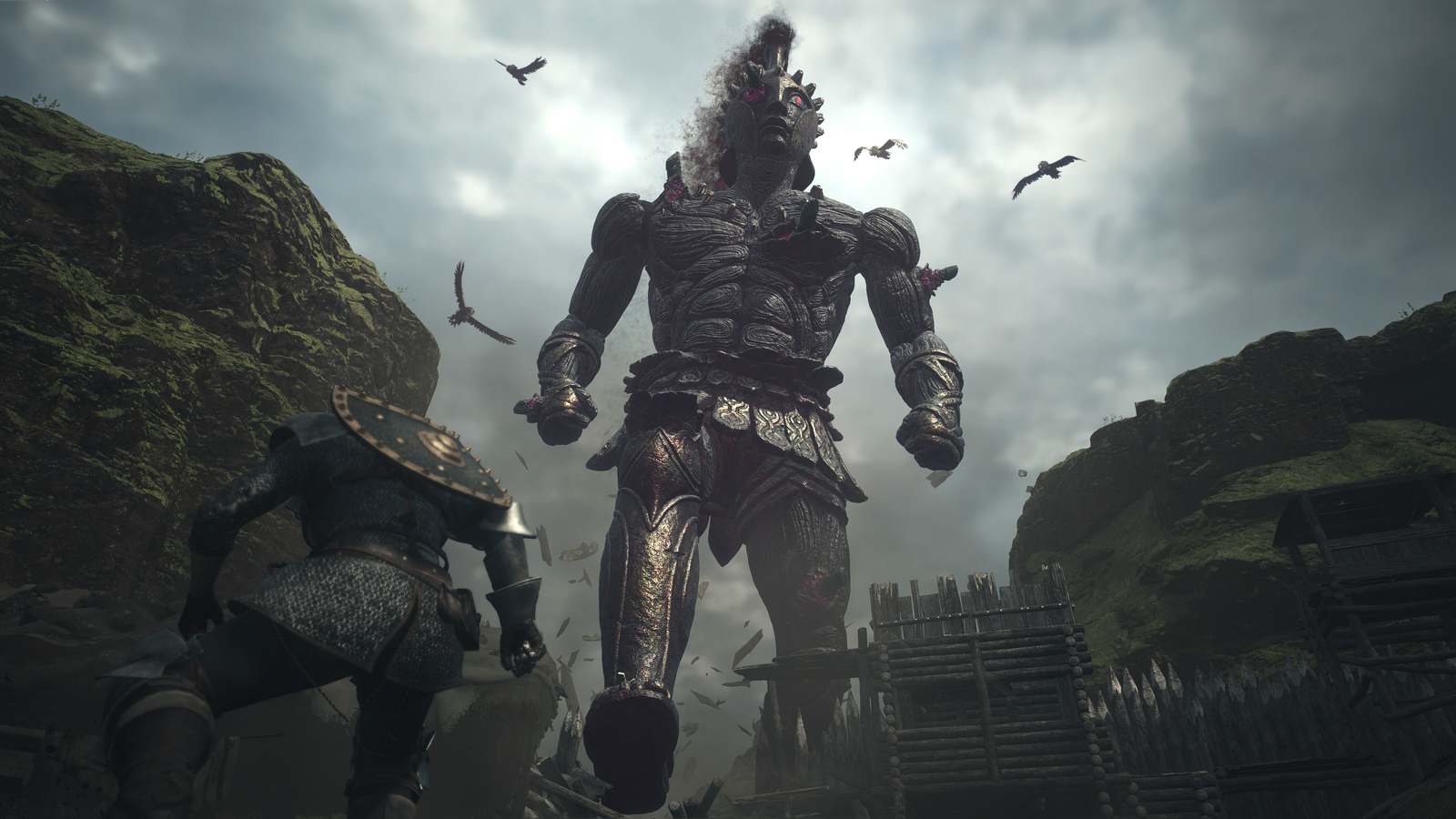Following on from PlayStation’s State of Play, we now have a solid look at many of the PS5’s upcoming titles. Your mileage may vary on how the lineup looks but the recurring question of where all the PS5 games are hasn’t quite been answered. Some of the biggest games at the showcase were remakes or remasters of older games such as Until Dawn or the Silent Hill 2 remake, or PC ports of already released titles like God of War: Ragnarok. That’s not to say there weren’t some big new PS5 games shown, but one in particular has me scratching my head at what we’re supposed to take away from it.
That would be Concord, the debut game from first-party PlayStation developer Firewalk Studios. A 5v5 endless multiplayer shooter, the game didn’t exactly give me the best first impression. The writing and characters in the cinematic trailer feel like microwaved Guardians of the Galaxy leftovers, and knowing that this is an Overwatch-like hero shooter where the pretty cutscenes and lore won’t actually be reflected in the gameplay doesn’t help. Of course, Concord could very well surprise once we get our hands on it, but Sony putting such heavy focus on a game that looks so bland just brings to mind that they have two solid first-party shooter IPs that have been languishing in their back-catalog for far too long: Killzone and Resistance. Why should Sony bring these forgotten franchises back to the spotlight? Let me explain.
Sony’s FPS Crisis
Concord being the first game shown during the State of Play isn’t something that happened in a vacuum. Ever since Microsoft announced its intention to purchase Activision, there has been a question mark hovering above the PlayStation brand, that being what’s going to happen to the Call of Duty franchise now that its direct competitor owns it. A big part of Sony’s argument in the regulation case that tried and failed to block the Activision purchase hinged on Call of Duty, with Sony stating during the case that “Microsoft claims that Nintendo’s differentiated model demonstrates that PlayStation doesn’t need Call of Duty to compete effectively. But this reveals Microsoft’s true strategy… Post-Transaction, Xbox would become the one-stop-shop for all the best-selling shooter franchises on console.”
To address the concern, Microsoft and Sony signed an agreement to keep the long-running series multiplatform, but such agreements aren’t bulletproof. Microsoft has full control over the Call of Duty IP, meaning Sony is effectively at its mercy when it comes to that franchise. However, Sony’s argument that PlayStation needs Call of Duty to stay competitive is a defeatist mindset. Call of Duty being the number one shooter franchise is not preordained by the gods. Franchises trend up and down all the time; look at Halo going from the top of the universe in the mid-2000s to simply “one among many” shooters in the modern era, or Overwatch being the biggest thing in the world on launch to now becoming a laughing stock as Blizzard tries and fails to deliver on the many promises of what Overwatch 2 was supposed to be.
Right now, Sony doesn’t have a prominent FPS to call its own.
However, none of that changes the fact that right now, Sony doesn’t have a prominent FPS to call its own. Helldivers 2 was certainly a surprise smash hit, but it’s a third-person shooter with no campaign. There’s also the recent snafu about the PSN login requirement that, although it was walked back, still caused much chaos in the game’s community and led the game to be delisted in 177 countries. Sony needs a big win in the FPS space to counteract Microsoft gobbling up the likes of Activision, Blizzard, and Id Software. Luckily, Sony has two old franchises waiting in the wings that could help it out of this bind.
Helghan Forever
At a time when a big part of Sony’s brand is its focus on AAA first-party games like The Last of Us, God of War, Horizon, or Insomniac’s Spider-Man games, Killzone being left out to dry is a serious missed opportunity. More so than most other franchises, Killzone was synonymous with the PlayStation brand in the PS3 era, with Killzone 2’s release in February of 2009 being something of a landmark moment for a console that seriously struggled with quality exclusives in its first couple of years. Alongside the likes of Metal Gear Solid 4 and Uncharted 2, Killzone 2 helped change the PS3’s reputation and finally made it a worthy competitor to the Xbox 360. That it was a sequel to a game that was not that well-received in the first place only made Killzone 2 all the more remarkable.
The first Killzone was released in 2004 on the PS2, and despite much pre-release hype as Sony’s potential answer to Halo, the game received mixed reviews. It’s not a bad game by any means, but it’s a disappointing beginning for the franchise given how compelling the world and visual design is. It often felt like a decent game with excellent presentation, including Brian Cox’s stellar vocal performance as Scolar Visari and Joris de Man’s iconic original score. But Killzone 2 showed that it’s sometimes worth taking a second chance on an idea that didn’t work out perfectly the first time, launching to spectacular reviews (including IGN’s), and selling more than a million units worldwide in less than two months. The Killzone series would become one of Sony’s marquee franchises in the years that followed, with a PS3 sequel Killzone 3 launching in 2011, and one of the PS4’s launch titles in 2013 being Killzone: Shadow Fall.
Now, we know Guerrilla Games is busy with Horizon these days, but certainly Sony has enough studios under its umbrella to let someone else take up Killzone’s flag. Its unique blend of hard sci-fi space opera, weighty FPS combat, and ‘WWII in space’ aesthetic, coupled with the iconic designs of the Helghast troopers, hasn’t really been borrowed by other shooters on the market. A new game in the series could also finally pull the trigger on a story campaign from the Helghast perspective, something fans have wanted for a long time because of their sympathetic backstory. Given Killzone’s importance to the history of PlayStation consoles, leaving it off the PS5 seems like a massive unforced error. Killzone 2 in particular is close to a masterpiece of sci-fi shooter design and not only deserves a modern facelift, but also a proper new entry to continue the saga. But it’s not the only Sony shooter series that warrants a resurrection.
Vive la Résistance
As mentioned previously, the PS3 struggled out of the gate given how few quality games were made for the console in its opening year. But out of all the launch titles, the one that stood out the most was Resistance: Fall of Man, an original FPS from Insomniac Games, more well known for Ratchet & Clank and its recent Spider-Man series. Although its multiplayer was bland, the single-player campaign was surprisingly meaty and could also be played in split-screen co-op (remember that?). More so, its story was fascinating – set in an alternate history where aliens called the Chimera invaded Earth in the 1950s – and Insomniac’s trademark for off-the-wall weapon design made for a great game that kind of got lost in the cultural conversation as more anticipated games launched on the system.
Despite this, Resistance was a regular player in the PS3’s catalog of franchises, with two direct sequels in Resistance 2 and 3 also released during the console’s lifecycle. Sadly, the series suffered a downturn with the second game, which tried too hard to match the conventions of other shooters in the marketplace at the expense of its own personality. Not only did the collection of creative weapons from the first game get shortchanged by forcing players to carry only two at a time instead of the whole arsenal, but the meager campaign was also dotted with an array of disappointing boss fights that tended to be more scripted sequences than dynamic battles. The multiplayer was improved, but the story was weak compared to the previous entry.
Insomniac righted the ship with Resistance 3, which went back to a lot of what both fans and the developers enjoyed about the series. In an interview with Kotaku, Insomniac CEO Ted Price said that all the changes in Resistance 2 “may have not been a good thing,” and that “on Resistance 3, we went back to some of our more traditional core mechanics that players did love, and then built a story that was more personal… we’re really proud of Resistance 3.” But that improvement didn’t translate to sales and the series flamed out with the third entry and the poorly received PlayStation Vita spin-off, Resistance: Burning Skies. Yet if Killzone taught us anything, it’s that one misstep shouldn’t mean giving up on a good series, and the alternate history world presented in Resistance is still rife with creative possibilities. The unconventional arsenal of weapons could be a great way to spice up a multiplayer suite, and there are many unseen eras or locations in the Resistance world that could be the focus of a new campaign should Insomniac or one of Sony’s other developers take another crack at it.
If Killzone taught us anything, it’s that one misstep shouldn’t mean giving up on a good series.
Sony has the resources to put up a fight in the shooter space, such as long-dormant franchises like Killzone or Resistance, or developers known for shooters like Bungie. There are many avenues to build first-person shooters on PlayStation, and games like Concord come from that need. We’ll see how Firewalk’s debut fares, but chasing the highs of other games that are already starting to age past their sell-by date is rarely a winning strategy. Not that Sony shouldn’t try to cultivate new IPs, it absolutely should, but if it needs a competitive edge, it would be worthwhile to highlight the values of the PlayStation brand that are, in fact, specific to PlayStation. And reviving two big franchises in the genre you’re currently struggling with that have pre-established fanbases and are already associated with your console? That would be one way to have that competitive edge a hell of a lot sooner.
Carlos Morales writes novels, articles and Mass Effect essays. You can follow his fixations on Twitter.


